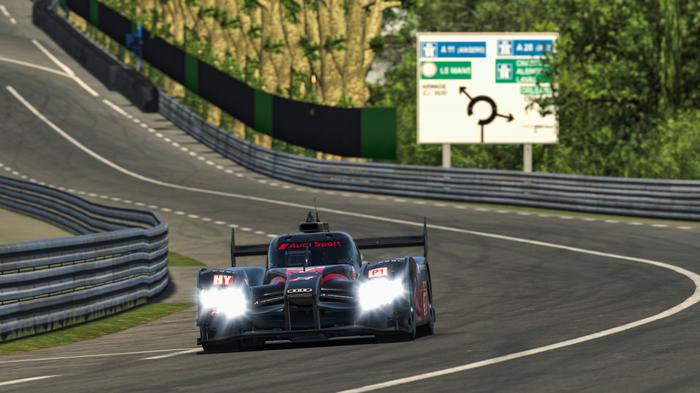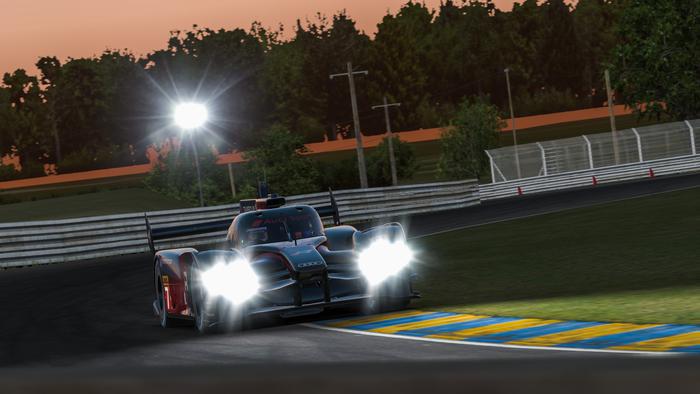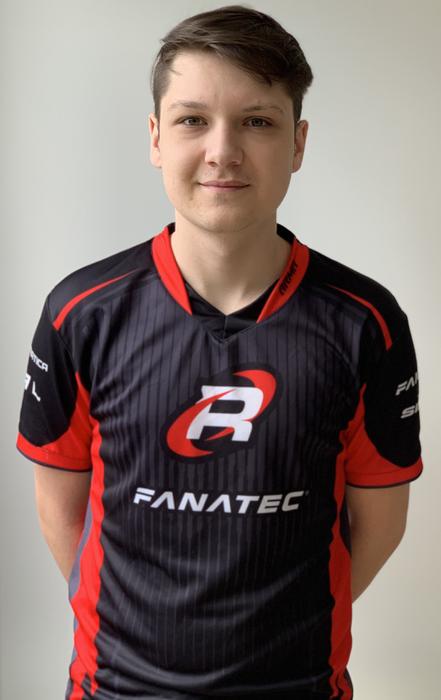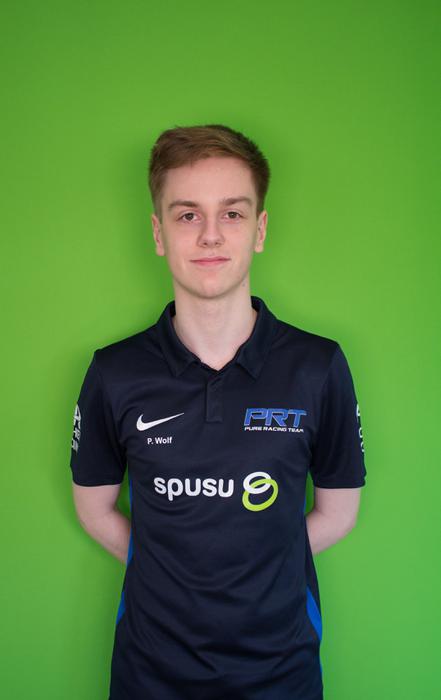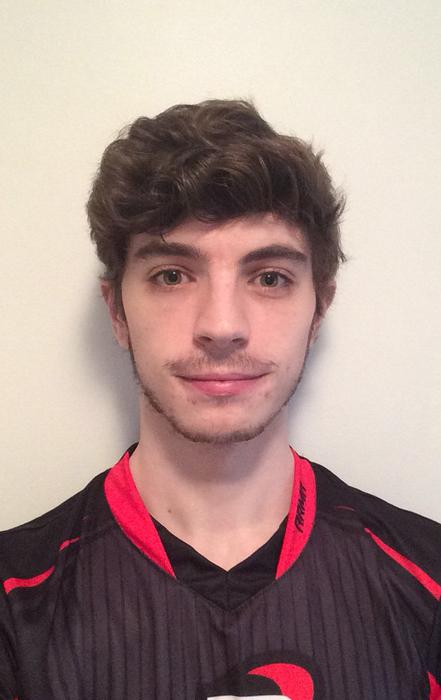- An interview with the four drivers of Team Redline after their victory in the iRacing 24h Le Mans powered by VCO.
- Tom Michelmore: “As someone who specialises in prototype cars, Le Mans of course is the big target.”
- Dominik Färber: “It’s definitely the most special victory for me.”
- Patrick Wolf: “The amount of dedication for winning in our team is so high and that’s what really drives us to do our best.”
- Matt Farrow: “Experience was an important key to success.”
Munich – From pole position to a great victory: Team Redline LMP1 and drivers, Dominik Färber, Tom Michelmore, Patrick Wolf and Matt Farrow, are the winners of the 2020 iRacing 24h Le Mans powered by VCO. In the VCO Victory Lane interview, the quartet speaks about the meaning of this triumph, the key to success and the challenges during the 24-hour endurance classic. The four drivers also explain why Team Redline is such a strong outfit and are looking forward to the rest of the season.
Congratulations on your win in the iRacing 24h Le Mans powered by VCO. What does this victory mean to you?
Tom Michelmore: I guess it is quite a big victory. As someone who specialises in prototype cars, Le Mans of course is the big target for everyone, so to grab that win and tick that box on the list is really fantastic. It is really important.
Patrick Wolf: For me it was the second time to win this race and in a way it feels more special this time than the first time because this time we had to fight for it over the full 24 hours. After making some minor mistakes at the start we came back from those and I feel like we really had to fight for it.
Dominik Färber: It’s definitely the most special victory for me since I’ve been doing sim racing. I always wanted to win this as I am a big Le Mans fan, from the real race already so it is definitely the biggest one for me.
Matt Farrow: LMP1 has been my main focus for almost the last two years so to come away with the win in the biggest race for these cars is incredibly satisfying.
What was the key to success?
Michelmore: For me, the key to success was keeping it clean, making sure that the car stays in one piece and try to avoid to slow down. Also making sure that you are well prepared, so we kind of knew what we were going to do, who was racing when, so we ourselves could get some kind of rest and be ready for our own stints. And I think the final key to success was to have the pace – that helps!
Färber: Everything the other guys said plus the strong line-up we had. We were four drivers who were very confident in this car and on this track and so we definitely did not have any weaknesses in that regard. And our preparation was just spot on for this race. Everything worked out as we wanted so it was a combination of everything that made it happen.
Farrow: Experience was an important key to success. I think we had one of, if not the most experienced line-ups. We’ve driven these cars for hundreds of hours each and I think that showed in the race. We made no major mistakes and we were able to keep the car clean.
You’ve mentioned the perfect preparation. Can you tell us some more details about that?
Michelmore: A lot of the preparation was us testing set-ups together and a lot of practicing either by ourselves or in hosted sessions to kind of understand each other’s strengths and weaknesses. So for example, I looked a lot at Matt’s telemetry because there were areas where I was not too confident and that helped me to improve there and I was faster than before. We also did a lot of work alongside the Burst Esport team in the build-up for the race. That meant we had the strengths of two teams working together to find the best sort of set-up. That also helped us to find the last tenths that were crucial over the 24 hours.
The Burst Esport team finished second overall behind you – so you really were the two strongest teams…
Wolf: Yes. Burst finishing second was great, not only for us but of course for them as well. They had struggled throughout the season in the LMP1 class and I think they obviously benefitted from us but so did we from them. And in the end, the preparation really helped both of our teams to elevate our performance for this race.
Farrow: Working with Burst was great, we were able to combine our different approaches and find a few more tenths. Having more people working together made it easier to test set-up changes and compare how they affected the car over the long run.
Färber: When you look at where the other cars finished, except for us and Burst, then you can clearly see the difference. P3 finished one lap down, and everybody behind finished several laps down. So you can clearly see what kind of difference this collaboration between our two teams made. We basically shared everything we had on car set-up, on strategy and so on, and instead of us four having a look over it we just had eight people working on it. I think that just maximised our performance for this race. Because we had more people having an eye on it and that reduced the chance that we would miss anything. This way also the chance of making mistakes was a lot smaller and it was a much better preparation.
What was your strategy for the race – and when did you define the strategy? Before or during the race?
Färber: Basically, everything was set before the race already. We looked at how many laps we need to do on fuel, if there is any saving needed – which wasn’t the case this time – how many stints we can do on the tyres in which temperatures. We’ve set all this up before and this plan worked out quite well during the race so we did not have to adapt anything, just some slight changes maybe – also because nothing major happened to us during the race.
Farrow: During the race, however, we had some flexibility in the strategy in when we could quad-stint the tyres. Due to the lower temps we were able to start quad stinting earlier.
What were the biggest challenges during the race?
Michelmore: For me personally, one of the challenges was having to quickly fill in for Dominik when he had a power-cut. I had a couple of laps to quickly prepare myself in the car. That was quite an interesting challenge because I hadn’t really warmed up as much as I would have liked to but still managed to keep the car safe and after a few laps I got the pace again. Another challenge I found was coming in from my second or final stint in the car in the morning and trying to keep myself awake because I did not manage to get much sleep from being too nervous about the race.
Färber: For me, the biggest challenge was to keep it clean during the race, to not have any incidents and stuff, because with so many different cars on track it is very, very difficult to not have a slight contact somewhere and to minimise the risk of somebody hitting you. Even if it is not your fault, sometimes there is not much you can do about it. To avoid all these things probably was the biggest challenge.
Farrow: I think one of the unique things about the 24h Le Mans is that it brings in so many drivers, some who may not be used to multiclass traffic. Trying to figure out which teams or drivers that need an extra metre or two was a constant challenge.
Wolf: My biggest challenge personally was around the dawn when Burst just had their little incident coming out of the pits and the gap suddenly showed up to something like two minutes. It was then really tough for me to keep my focus and still pump in good lap times while not taking too many unnecessary risks.
The race duration is 24 hours, but how long is such a ‘race day’ for you in real? When did you start on Saturday and when did you finish on Sunday? And have you been able to get a bit of sleep in between?
Wolf: I got up at around 10:00 am on Saturday. I had enough sleep to be able to bring my best performance and after I had finished my first quad stint, I went to bed. Even if I found it quite difficult I still got around four hours of sleep but when you get up after four hours, concentrating is still not all that easy. From then on I just stayed awake until the end of the race and I don’t even know when I went to bed on Sunday – probably way too late.
Färber: I woke up on Saturday around midday just to have a bit of more sleep before the race. Usually I do some warm-up laps before the start just to not go into the race completely ‘cold’. We had actually planned our stints a little bit after the normal ‘sleeping schedules’ of our drivers. Some guys stay awake a bit longer normally, some wake up earlier, so we tried to merge this together so everybody would be in his normal, comfortable sleeping pattern and nobody had to drive at a time where he normally would not be awake. I did a big part of the night until the early morning and then I went to bed and actually got quite a lot of sleep like five hours before I came back for the race finish. That worked really well and I was completely fresh again to do the final stint.
Michelmore: I tried to wake up as late as possible on Saturday for the race. I think I got up maybe two hours or one hour before to make sure I had as much sleep as possible. And then, yes, I do try and sleep in between because I would not be able to drive on low energy so I managed to get a couple of hours of sleep. Then Sunday I was trying to stay up until the evening because I did not want to completely screw up my sleeping patterns so I stayed up until probably nine and it was all good.
Farrow: Fortunately we had four drivers so we were able to space out the driving times. I was able to get up an hour before the race and finish my scheduled drive after being awake for 18 hours, so it wasn’t anything extreme. I planned to go to bed after but it’s hard when you know you have a shot at winning the race! I must have only slept an hour or two before the checkered flag.
You took the overall win and your team-mates finished second in the LMP2 class. What makes Team Redline so strong?
Wolf: Even though our approach to every race is different for every driver in our team, I think the amount of dedication for winning in our team is so high and that’s what really drives us to do our best.
Färber: I think a big part of the success is the professionalism of the team. Everybody takes it extremely serious, everybody wants to win every race he is in and that is why a Redline car will always be at the front every time it is entering a race. Anything else just does not really count for us. So obviously we want to win every race and that’s also how we approach it.
Dominik, you are already confirmed to participate in the next iRacing Special Event powered by VCO, the 24h Spa in mid-July. Spa is a real classic like Le Mans, what makes this race so appealing?
Färber: Yes, I definitely plan to do it as the iRacing Special Events are always the biggest races for me and I want to do as many as I can. Spa is special like every 24-hour race simply because it is so fascinating to do it over a full day, twice around the clock. And what I like the most about it is to do it together with team-mates. If I do a race alone, it’s not that interesting for me. When you are together in a team, it is a completely different experience. That’s what goes for all 24-hour races and obviously Spa is a very historical, a very traditional track and the race also has a long tradition, so it is going to be a special one similar to Le Mans. Another thing making Spa so special is that it is a one-class race and you only have the 55 GT3 cars and not so many different cars in three classes as we had at Le Mans so the field is very different.
What will be the further highlights for you in the remaining season?
Michelmore: One of the highlights will probably be ‘Petit Le Mans’ in the Daytona prototype; that is one I am quite interested in doing. Another highlight will be when iRacing releases the new Prototype 2 cars. I don’t know when exactly that’s meant to come out but I think that will be a really interesting car for me to drive so I am looking forward to that being released. And there is another interesting series coming up later in the season, the Sports Car Open, which looks quite exciting to take part in.
Färber: As Tom said: ‘Petit Le Mans’ will for sure be a special race. We finished second there last year together with Patrick and this year we will definitely work on a tactic for the win because we finished second at Le Mans last year and we won it this year. Another highlight will be the SimRacing Expo, even if it will not be ‘live’ at the Nürburgring this year but there will be an online version which I am looking forward to.
Farrow: I think the new LMP2 car when it arrives will probably be my main focus so any events that use it I’m sure to be there!
About VCO
Virtual Competition Organisation (VCO) brings together different stakeholders in Esports, from simulation or gaming platforms and interested partners to active teams, drivers and the community. In a rapidly growing sector, VCO stands for professionalism, focus and a broad media presence. With its international network, VCO provides solutions for the best possible conception and implementation of Esports projects of all kinds.
Contact for Media Requests
Alexander Mey
Phone: +49 (0)89 45 23 50 91 03
mey@vco-motorsports.com
VCO Social Channels
Web: www.vco-motorsports.com
Twitch: www.twitch.com/vcomotorsports
Instagram: www.instagram.com/vcomotorsports
Twitter: www.twitter.com/vcomotorsports
Facebook: www.facebook.com/vcomotorsports
Vimeo: www.vimeo.com/vcomotorsports
Downloads
